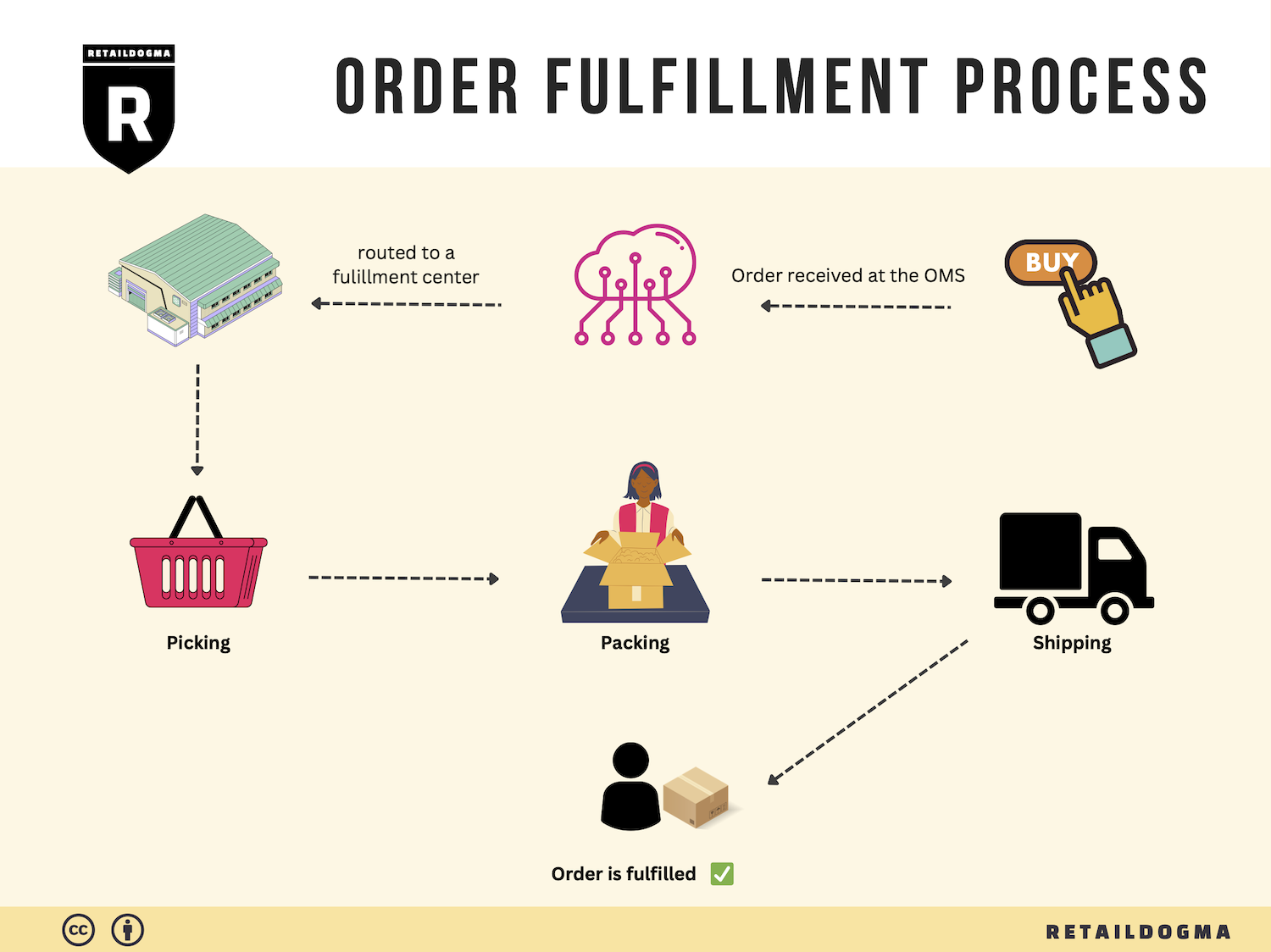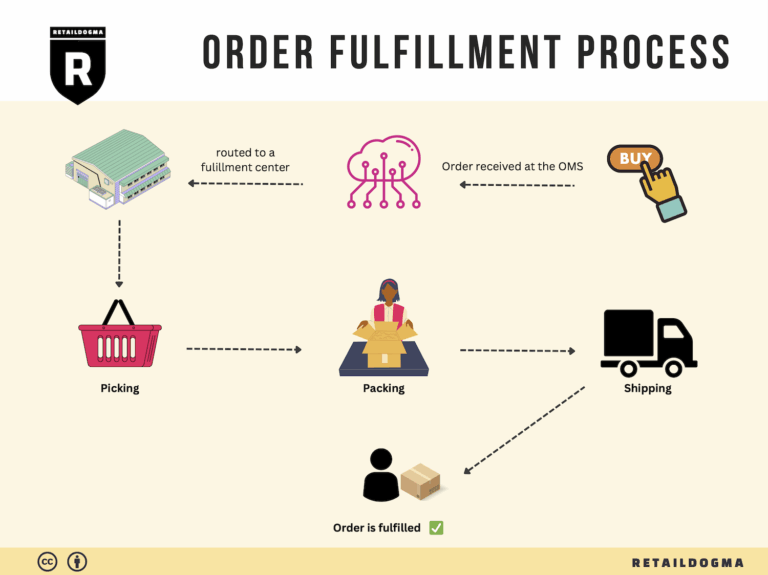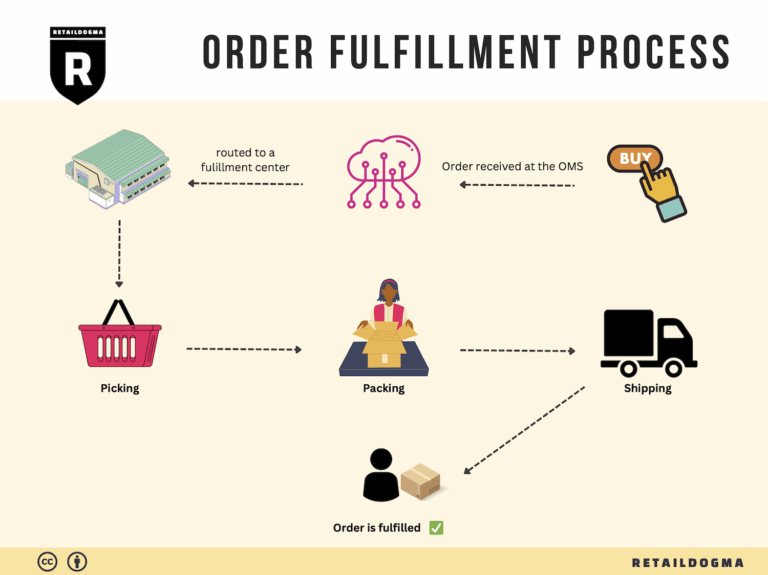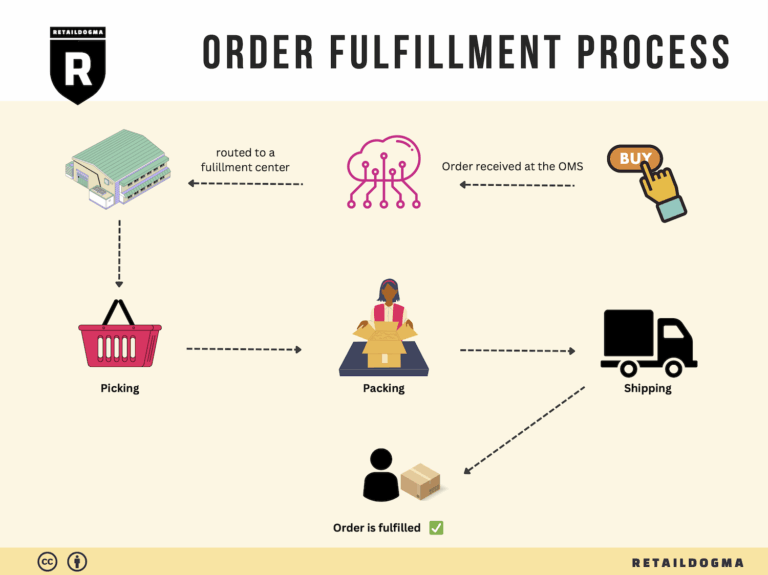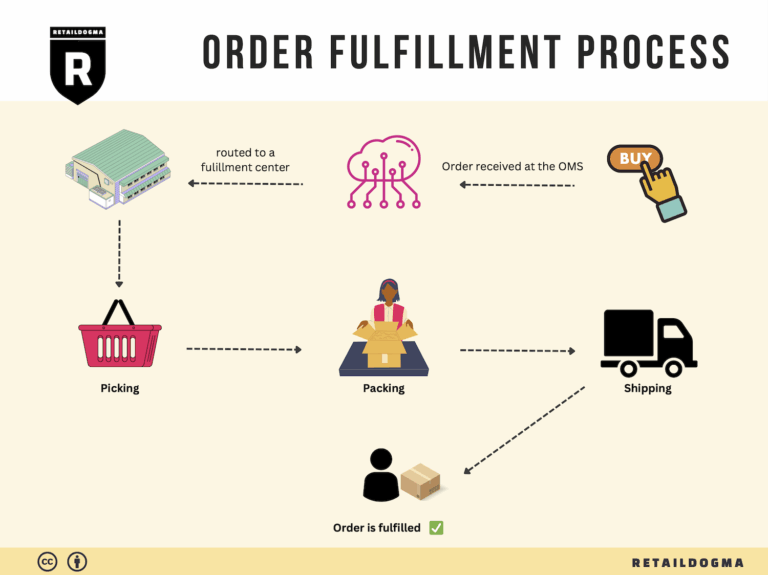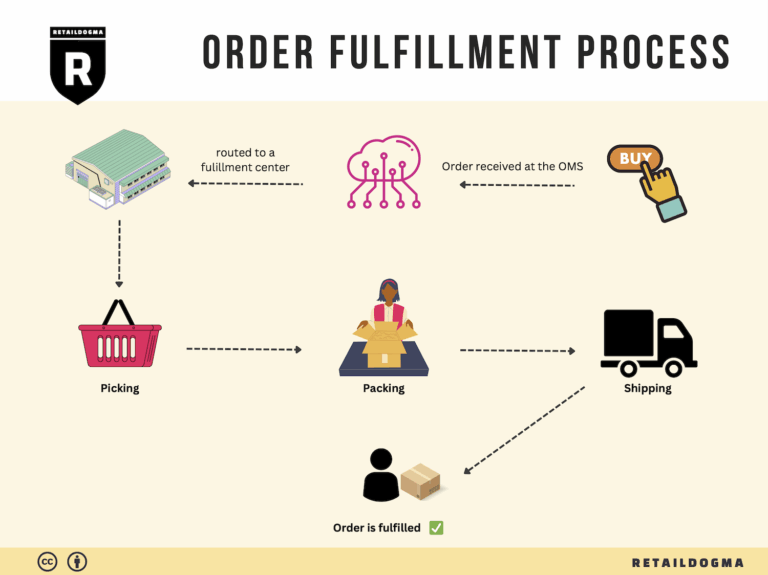What Is A Fulfillment Center? A Complete Guide (2025)
What is E-commerce Fulfillment? An Introduction for Growing Businesses
Understanding the Challenges of E-commerce Fulfillment
For many growing e-commerce businesses, the logistics of packing and shipping orders can quickly become overwhelming. As sales increase, so do the complexities of managing inventory, processing orders, and ensuring timely delivery to customers. This often leads to a significant pain point: the struggle to maintain efficiency while meeting customer expectations for fast and reliable service.
What is E-commerce Fulfillment?
In its simplest form, e-commerce fulfillment is the process of getting a product from your store to your customer. This involves multiple steps: receiving inventory, storing it, picking and packing orders, and finally shipping them out. Each step requires careful management to ensure that customers receive their orders accurately and on time. As your business grows, understanding the intricacies of fulfillment becomes crucial to sustaining that growth.
What This Guide Will Cover
This guide aims to demystify e-commerce fulfillment by exploring various models and practices that can help streamline your operations. We will cover:
-
Fulfillment Models: Learn about different fulfillment options, including Third-Party Logistics (3PL) providers and Amazon’s Fulfillment by Amazon (FBA) service. Understanding these models will help you identify which is best suited for your business needs.
-
Core Services: We’ll break down the essential services offered by fulfillment partners, such as inventory management, order processing, packing, and shipping. Knowing what to expect from your partner can help you avoid costly surprises.
-
Choosing a Partner: Selecting the right fulfillment partner is a critical decision that can impact your entire operation. We’ll provide insights on what to look for in a partner, including technology capabilities, service quality, and scalability.
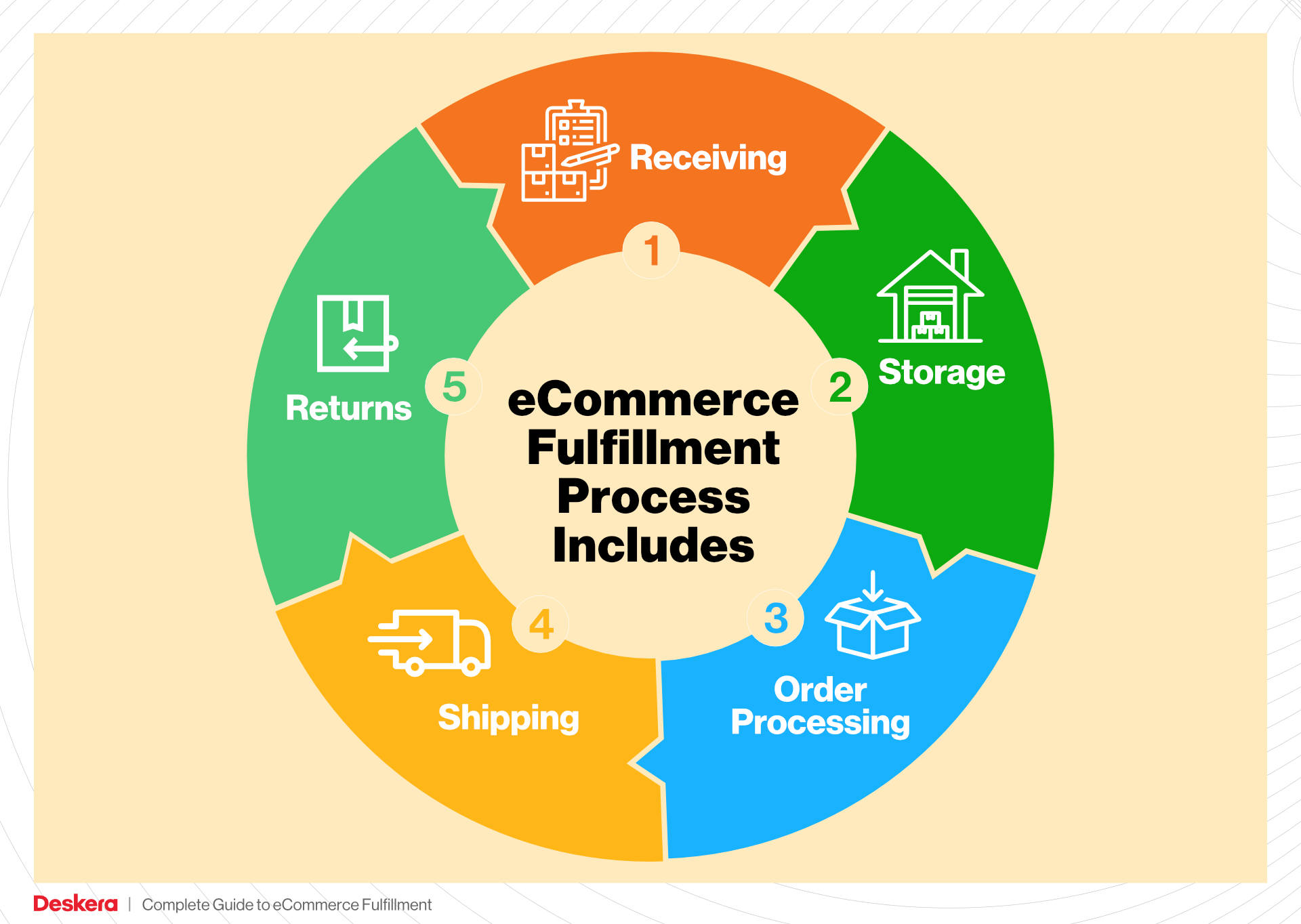
-
Pricing Considerations: Understanding the cost structure associated with fulfillment services is essential for budgeting and financial planning. We will discuss various pricing models and factors that can influence costs.
Empowering Your Logistics Decisions
Ultimately, the goal of this guide is to empower you, the business owner, to make informed decisions about your logistics strategy. By understanding the nuances of e-commerce fulfillment, you can implement solutions that enhance efficiency, improve customer satisfaction, and support your business growth. With the right knowledge and resources, you can navigate the complexities of fulfillment with confidence, allowing you to focus on what truly matters—growing your business.
What You’ll Learn In This Guide
- What is E-commerce Fulfillment? An Introduction for Growing Businesses
- The Order Fulfillment Process: From ‘Buy’ Button to Customer’s Door
- Comparing Fulfillment Models: In-House vs. 3PL vs. Dropshipping
- A Deep Dive into Amazon FBA: Pros, Cons, and Who It’s For
- Core Services Offered by Fulfillment Centers
- How to Choose a Fulfillment Partner: A 6-Point Checklist
- Understanding Fulfillment Pricing: A Breakdown of Common Fees
- Frequently Asked Questions (FAQs) about Fulfillment
- Conclusion: Is Outsourcing Fulfillment the Right Move for Your Business?
- Important Disclaimer
The Order Fulfillment Process: From ‘Buy’ Button to Customer’s Door
1. Receiving Inventory
The order fulfillment process begins with receiving inventory at the fulfillment center. When products arrive at facilities like Amazon Fulfillment Center-BNA6, they undergo a thorough inspection to ensure they meet quality standards. This step involves checking for damages, verifying quantities against purchase orders, and ensuring that products are properly labeled with Stock Keeping Units (SKUs).
Importance: Efficient receiving processes minimize errors, reduce the risk of stockouts, and enhance inventory accuracy, which is critical for maintaining customer satisfaction. Accurate inventory data allows businesses to forecast demand more effectively and manage stock levels proactively.
Key Term: SKU (Stock Keeping Unit) – A unique identifier for each product, enabling precise tracking and management of inventory.
2. Warehouse Storage
Once inventory is received, the next step is warehouse storage. Products are systematically organized in designated areas within the fulfillment center, often categorized by product type, size, or sales velocity. Advanced warehouse management systems (WMS) are employed to optimize storage layouts and track inventory locations.
Importance: Proper storage solutions are vital for maximizing space efficiency and facilitating easy access to products. This organization ensures that items can be retrieved quickly, which is essential for maintaining quick turnaround times in order processing.
Key Term: WMS (Warehouse Management System) – Software that supports warehouse functionality, including tracking inventory levels, managing stock locations, and optimizing storage.
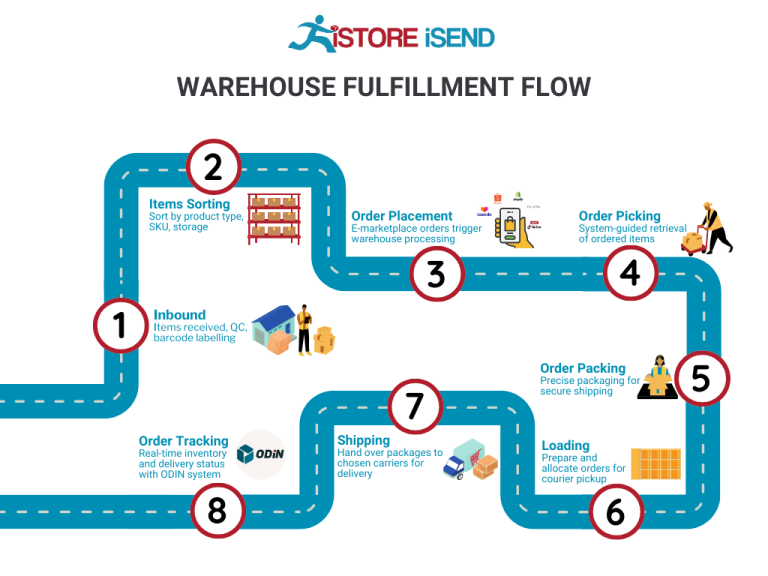
3. Order Picking
When a customer places an order, the fulfillment process moves to order picking. This involves selecting the correct items from the warehouse based on the order details. Fulfillment centers use pick lists, which are generated based on the incoming orders, to guide workers in retrieving the right products.
Importance: Efficient picking is crucial for reducing lead times and ensuring that orders are accurate. Mistakes during this step can lead to customer dissatisfaction and increased return rates, which can be costly for businesses.
Key Term: Pick List – A document or digital list that outlines the items to be collected for fulfilling customer orders, including quantities and locations within the warehouse.
4. Order Packing
After items are picked, they move to the packing station. Here, products are carefully packed into boxes or envelopes to ensure they are protected during transit. This step includes labeling packages with shipping information and barcodes, which facilitate tracking.
Importance: Effective packing not only protects the products but also enhances the unboxing experience for customers. Properly packed orders reduce the likelihood of damage during shipping, minimizing the need for returns and replacements.
Key Term: Packing Slip – A document included in the package that lists the contents of the order, often used for customer reference and inventory management.
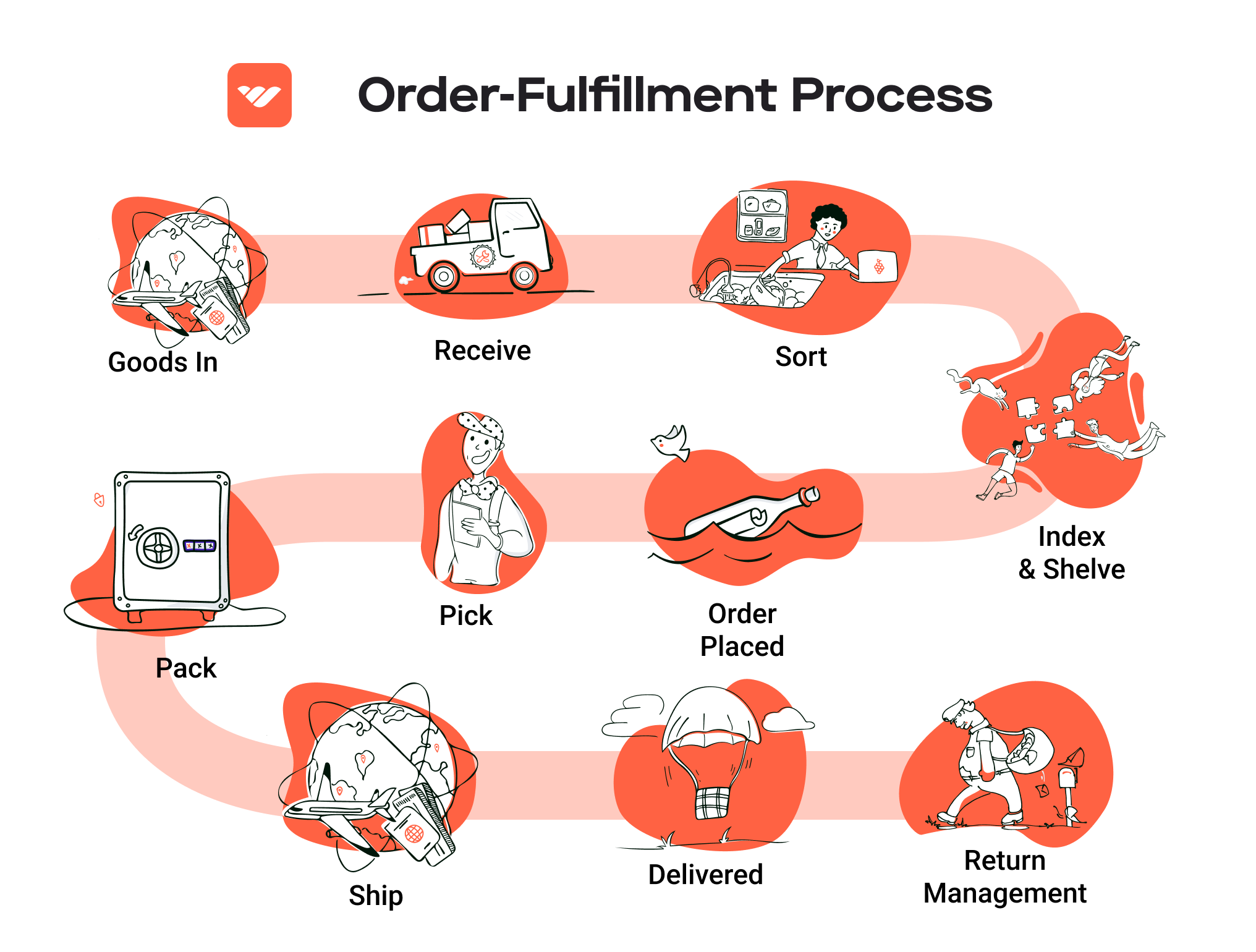
5. Shipping & Delivery
The final step in the order fulfillment process is shipping and delivery. Once packed, orders are dispatched to shipping carriers for transportation to the customer’s address. Fulfillment centers like BNA6 leverage partnerships with multiple carriers to optimize shipping routes and delivery times.
Importance: Timely and efficient shipping is critical for maintaining customer satisfaction and loyalty. Providing tracking information to customers enhances transparency and allows them to monitor their order status, which is increasingly expected in today’s e-commerce landscape.
Key Term: Last-Mile Delivery – The final step in the shipping process where the package is delivered from a transportation hub to the final destination, usually the customer’s home or business.
By understanding and optimizing each step of the order fulfillment process, e-commerce businesses can enhance operational efficiency, improve customer satisfaction, and ultimately drive sales growth. Implementing best practices in each phase ensures that from the moment a customer clicks the “buy” button to the delivery at their door, the experience is seamless and satisfying.
Comparing Fulfillment Models: In-House vs. 3PL vs. Dropshipping
Comparison of Fulfillment Models
| Model | Who Handles Inventory | Best For (Business Stage) | Key Advantage | Key Disadvantage |
|---|---|---|---|---|
| In-House Fulfillment | Business owner/team | Established businesses | Full control over inventory and processes | High overhead costs and resource-intensive |
| Third-Party Logistics (3PL) | External logistics provider | Growing businesses | Scalability and reduced operational burden | Less control over inventory and fulfillment speed |
| Dropshipping | Supplier | Startups and small businesses | Low startup costs and no inventory risk | Lower profit margins and reliance on suppliers |
In-House Fulfillment
In-house fulfillment involves a business managing its own inventory, warehousing, and shipping processes. This model is often adopted by established businesses that have sufficient resources and want to maintain control over their logistics. By handling fulfillment internally, companies can implement tailored processes that align with their unique operational needs and customer service standards. The ability to manage inventory directly allows for a more personalized customer experience, as businesses can respond quickly to customer inquiries and ensure the quality of packaging and shipping.
However, in-house fulfillment comes with significant overhead costs, including staffing, warehousing, and technology investments. These expenses can be a burden, especially for smaller businesses or those with fluctuating sales volumes. Additionally, managing logistics can be resource-intensive, diverting focus from core business activities such as product development and marketing. As a business scales, it may find that maintaining an in-house operation is no longer feasible or efficient, prompting a transition to other fulfillment models.
Third-Party Logistics (3PL)
Third-party logistics (3PL) providers offer businesses the opportunity to outsource their inventory management and fulfillment operations. This model is particularly beneficial for growing businesses that need to scale their logistics without the capital investment required for in-house fulfillment. A 3PL provider typically manages warehousing, inventory storage, order processing, and shipping, allowing businesses to focus on their core competencies while leveraging the expertise and resources of a logistics specialist.
One of the key advantages of using a 3PL is scalability. As sales grow, businesses can easily increase their logistics capabilities without the need for significant capital expenditure. Moreover, 3PL providers often have established networks and technologies that can enhance shipping speed and efficiency. However, businesses using 3PL may face challenges related to control and visibility over their inventory. Relying on an external provider can lead to potential delays and miscommunications, impacting customer satisfaction. Additionally, the costs associated with 3PL services can add up, particularly if a business’s shipping volume fluctuates significantly.
Dropshipping
Dropshipping is a fulfillment model where a retailer does not keep goods in stock but instead transfers customer orders directly to a supplier, who then ships the products to the customer. This model is highly appealing for startups and small businesses due to its low barrier to entry. Since there is no need to invest in inventory upfront, businesses can launch with minimal financial risk and test their product offerings without significant overhead.
The primary advantage of dropshipping is that it eliminates inventory risk and reduces the need for warehousing and logistics management. Retailers can offer a wide range of products without the financial burden of holding stock, making it an attractive option for those testing new markets or product lines. However, dropshipping also comes with its drawbacks. Profit margins are generally lower than in traditional retail models, and businesses are reliant on suppliers for inventory management and shipping quality. This dependency can lead to delays, stockouts, and customer dissatisfaction if suppliers do not meet expectations. Additionally, the lack of control over fulfillment processes can make it challenging to build a strong brand identity and customer loyalty.
In conclusion, the choice between in-house fulfillment, 3PL, and dropshipping depends on various factors, including business size, growth stage, and operational priorities. Each model has its unique advantages and challenges, and business owners must carefully consider their specific needs and resources before making a decision. By aligning their fulfillment strategy with their overall business goals, e-commerce entrepreneurs can effectively scale their operations and enhance customer satisfaction.
A Deep Dive into Amazon FBA: Pros, Cons, and Who It’s For
Understanding Fulfillment by Amazon (FBA)
Fulfillment by Amazon (FBA) is a service provided by Amazon that allows sellers to store their products in Amazon’s fulfillment centers. Amazon then takes care of storage, packaging, and shipping to customers. This service is particularly beneficial for e-commerce businesses looking to scale their operations without the overhead of managing logistics themselves.
How FBA Works
When a seller enrolls in FBA, they send their products to Amazon’s fulfillment centers. Upon receiving the inventory, Amazon takes over the logistics. This includes:
-
Storage: Products are stored in Amazon’s warehouses. Sellers can track inventory levels via the Amazon Seller Central dashboard.
-
Order Processing: When a customer places an order for a seller’s product, Amazon handles the entire process, from picking the item off the shelf to packing it and shipping it directly to the customer.
-
Customer Service: Amazon provides customer service for FBA orders, handling inquiries, returns, and refunds.
-
Shipping: FBA products are eligible for Amazon Prime, which offers customers free two-day shipping, further increasing the attractiveness of the product.
-
Returns Management: Amazon also manages returns, making the process easier for both sellers and customers.
Pros of Using FBA
1. Prime Eligibility
One of the most significant advantages of using FBA is that it automatically qualifies products for Amazon Prime. This can dramatically increase sales as Prime members tend to prefer products that offer fast, free shipping.
2. Customer Trust
Products fulfilled by Amazon are often viewed as more trustworthy due to Amazon’s established reputation for reliable service. This can lead to higher conversion rates, as customers are more likely to purchase from sellers who use FBA, knowing that they are backed by Amazon’s customer service and return policies.
3. Multi-Channel Fulfillment
FBA isn’t limited to Amazon’s marketplace. Sellers can use FBA to fulfill orders from their own websites or other platforms, allowing for a unified inventory management system. This flexibility makes it easier for businesses to manage their logistics across multiple sales channels.
4. Scalability
For growing e-commerce businesses, FBA provides a scalable solution. As demand increases, sellers can easily send more inventory to Amazon without having to invest in their own warehousing and logistics infrastructure.
5. Time Savings
By outsourcing logistics to Amazon, sellers can focus on other aspects of their business, such as product development and marketing, rather than worrying about shipping, packing, and handling returns.
Cons of Using FBA
1. High Fees
While FBA can streamline operations, it comes with costs that can eat into profit margins. Sellers incur storage fees based on the amount of space their inventory occupies in Amazon’s warehouses and fulfillment fees for each unit shipped. This can be particularly burdensome for low-margin products.
2. Strict Inventory Rules
Amazon has stringent inventory management policies. Sellers must adhere to guidelines regarding inventory limits, product preparation, and labeling. Failure to comply can result in additional fees or even removal of inventory from fulfillment centers.
3. Commingling Risks
FBA products may be commingled with other sellers’ inventory, meaning that items from different sellers are stored together. This can lead to issues such as receiving the wrong item in a return or concerns about product authenticity. Sellers need to weigh the risks of commingling, especially if they sell unique or high-value items.
4. Loss of Control
By using FBA, sellers relinquish a degree of control over the shipping and handling of their products. This can lead to challenges such as inconsistent packaging or shipping errors, which may reflect poorly on the seller’s brand.
5. Dependency on Amazon
Relying on FBA can create a dependency on Amazon’s platform and policies. Changes to Amazon’s fee structure, rules, or algorithms can significantly impact a seller’s business, making it crucial for sellers to stay informed and adaptable.
Who is FBA Best For?
FBA is particularly advantageous for:
- Small to Medium-Sized Businesses: Companies that lack the resources or infrastructure to manage their own logistics can benefit significantly from FBA.
- Brands with High Turnover: Products that sell quickly can leverage FBA to maintain inventory without the burden of warehousing costs.
- E-commerce Entrepreneurs: New sellers entering the market can utilize FBA to gain immediate access to Amazon’s vast customer base and logistics network.
- Multi-Channel Sellers: Brands selling on multiple platforms can streamline their operations by using FBA to fulfill orders from various sources.
In conclusion, Fulfillment by Amazon offers a powerful solution for e-commerce businesses looking to scale efficiently. However, it’s essential for sellers to carefully evaluate both the benefits and drawbacks to determine if FBA aligns with their specific business goals and operational capabilities.
Core Services Offered by Fulfillment Centers
Inventory Management & Warehousing
Inventory management and warehousing are foundational services provided by fulfillment centers, enabling e-commerce businesses to efficiently store and manage their products. Fulfillment centers, such as Amazon’s BNA6, utilize sophisticated inventory tracking systems that allow businesses to monitor stock levels in real-time. This system helps prevent stockouts and overstock situations, ensuring that products are available when customers place orders.
The benefits of effective inventory management extend beyond mere stock control. By leveraging advanced technology, fulfillment centers can provide analytics on sales trends, seasonal demands, and product performance. This data is invaluable for e-commerce businesses as it informs purchasing decisions, optimizes inventory turnover, and enhances overall supply chain efficiency. With a dedicated warehousing solution, businesses can also reduce overhead costs associated with maintaining their own storage facilities, allowing them to focus on scaling their operations and improving customer satisfaction.
Pick and Pack Services
Pick and pack services refer to the process of selecting items from inventory (picking) and packaging them for shipment (packing). Fulfillment centers like BNA6 streamline this process to ensure that orders are fulfilled quickly and accurately. The efficiency of these operations is critical in today’s fast-paced e-commerce environment, where consumers expect rapid delivery times.
The primary advantage of utilizing pick and pack services is the reduction of order processing time. Fulfillment centers employ automated systems and skilled labor to minimize errors and speed up the picking process. This accuracy not only enhances customer satisfaction by ensuring that the correct products are shipped but also reduces the costs associated with returns and re-shipments. Additionally, outsourcing these services allows e-commerce businesses to scale their operations without the burden of managing logistics internally, enabling them to allocate resources towards growth initiatives.
Kitting and Assembly
Kitting and assembly involve grouping multiple products together into a single package or preparing items for sale by assembling components. This service is particularly beneficial for businesses that offer bundled products or customized orders. Fulfillment centers often provide kitting services that can include everything from assembling gift sets to preparing subscription boxes.
The main benefit of kitting and assembly services is the ability to create unique product offerings that enhance customer appeal. By combining multiple items into one cohesive package, businesses can differentiate themselves in a competitive market and potentially increase average order value. Furthermore, these services can streamline the production process by reducing the time spent on assembly and packaging. E-commerce businesses can take advantage of these efficiencies to meet customer demands more effectively and enhance their overall operational agility.
Returns Management (Reverse Logistics)
Returns management, or reverse logistics, is the process of handling returned products efficiently. Fulfillment centers play a crucial role in managing returns by providing streamlined processes for inspecting, restocking, and reselling returned items. Effective returns management is essential for maintaining customer satisfaction and loyalty, as it directly impacts the shopping experience.
For e-commerce businesses, the benefits of effective returns management are substantial. A well-organized returns process can enhance customer trust and encourage repeat purchases. Fulfillment centers often provide analytics on return trends, enabling businesses to identify common issues that may lead to product returns. This insight can inform product quality improvements and adjustments in inventory management strategies. Additionally, by outsourcing returns management to fulfillment centers, businesses can reduce the operational burden of handling returns, allowing them to focus on core activities such as marketing and product development.
In conclusion, partnering with a fulfillment center like Amazon BNA6 offers e-commerce businesses a comprehensive suite of services that streamline operations and enhance customer satisfaction. By leveraging inventory management, pick and pack services, kitting and assembly, and returns management, businesses can scale effectively, reduce operational costs, and improve their overall supply chain efficiency. This strategic partnership not only supports current growth but also positions businesses for future success in an increasingly competitive market.
How to Choose a Fulfillment Partner: A 6-Point Checklist
Location & Warehouse Network
The geographical location of your fulfillment partner’s warehouses is crucial. A partner with strategically placed facilities can significantly reduce shipping times and costs, improving customer satisfaction.
Why It’s Important:
– Proximity to your customer base can enhance delivery speed.
– A well-distributed warehouse network can mitigate shipping delays and reduce transportation costs.
Questions to Ask:
– What is the location of your warehouses, and how do they align with my target market?
– Do you have multiple warehouses, and what regions do they cover?
– Can you provide an estimate of shipping times to various regions?
Technology & Integrations
In today’s e-commerce landscape, technology plays a pivotal role in logistics. A fulfillment partner should utilize advanced systems for inventory management, order processing, and real-time tracking.
Why It’s Important:
– Effective technology integration can streamline operations, reduce errors, and provide transparency.
– Compatibility with your existing systems (e.g., e-commerce platforms, ERPs) is vital for seamless operations.
Questions to Ask:
– What inventory management and order processing systems do you use?
– Are your systems compatible with my e-commerce platform?
– How do you handle tracking and reporting for shipments?
Specializations (e.g., cold storage, oversized items)
Different businesses have varying needs based on their product types. Ensure that your fulfillment partner has the necessary capabilities to handle your specific products.
Why It’s Important:
– Certain products may require special handling, such as perishable goods needing cold storage or oversized items needing special shipping solutions.
– A partner with the right expertise can prevent damage and ensure compliance with regulations.
Questions to Ask:
– What types of products do you specialize in fulfilling?
– Do you have facilities for specific needs, such as temperature-controlled storage or handling of hazardous materials?
– Can you accommodate oversized or bulky items, and what are the associated costs?
Scalability & Capacity
As your business grows, your fulfillment partner should be able to scale their services to accommodate increased demand without compromising service quality.
Why It’s Important:
– A scalable partner can help you manage seasonal spikes and unexpected growth.
– Ensuring that a partner has the capacity to handle your growth prevents operational bottlenecks.
Questions to Ask:
– How do you handle fluctuations in order volume?
– What is your current capacity, and how quickly can you scale operations?
– Can you provide examples of how you’ve supported other clients during periods of rapid growth?
Pricing and Contracts
Understanding the pricing structure and contract terms is essential to ensure that your partnership is financially viable and aligns with your budget.
Why It’s Important:
– Transparent pricing helps avoid unexpected costs and ensures you can forecast expenses accurately.
– Clear contract terms can protect your interests and outline service expectations.
Questions to Ask:
– What are your pricing models (e.g., per order, per item, monthly fees)?
– Are there any hidden fees (e.g., for storage, picking, or returns)?
– Can you provide a sample contract for review, and what is your policy on contract termination?
Customer Support & Reviews
The level of customer support your fulfillment partner offers can significantly impact your operations. Additionally, checking reviews and testimonials can provide insights into their reliability and service quality.
Why It’s Important:
– Responsive customer support can quickly resolve issues, minimizing disruptions to your business.
– Positive reviews from other businesses can indicate a track record of reliability and satisfaction.
Questions to Ask:
– What customer support channels do you offer (e.g., phone, email, chat)?
– What are your average response times for customer inquiries or issues?
– Can you provide references or case studies from businesses similar to mine?
Conclusion
Choosing the right fulfillment partner is a critical decision that can affect your business’s efficiency, customer satisfaction, and overall success. By using this checklist, you can systematically evaluate potential partners based on key criteria that align with your business goals. Take the time to conduct thorough research and ask the right questions to ensure a fruitful partnership that supports your growth ambitions.
Understanding Fulfillment Pricing: A Breakdown of Common Fees
Initial Setup Fees
Initial setup fees are one-time charges incurred when you first start using a fulfillment center’s services. These fees can vary significantly based on the complexity of your business needs and the fulfillment provider’s operational requirements. Common components of initial setup fees include account creation, integration with your e-commerce platform, and any necessary training for your staff on how to use the system.
To calculate these fees, fulfillment centers often assess the level of integration required and the time it will take to onboard your business. For instance, if your e-commerce platform requires custom API integration, expect higher setup fees compared to a standard integration. It is crucial to ask for a breakdown of these costs upfront to avoid surprises later.
Receiving Fees
Receiving fees are charged when your products arrive at the fulfillment center. These fees cover the labor and resources required to inspect, sort, and put away your inventory. The calculation of receiving fees typically depends on the number of units received and the complexity of the items.
For example, if your products are large, heavy, or require special handling, the receiving fees may be higher. Conversely, standard-size items may incur lower fees. Fulfillment centers may also charge for additional services, such as labeling or repacking, which could further increase the receiving costs. Always clarify how the receiving process works and request estimates based on your inventory’s characteristics.
Storage Fees (per pallet/bin)
Storage fees are recurring charges for keeping your inventory in the fulfillment center. These fees can be calculated on a per-pallet or per-bin basis, depending on how your items are stored. The fee structure is typically monthly and can vary based on the size and volume of the items being stored.
Fulfillment centers often implement tiered pricing, where the cost per pallet decreases as the number of pallets stored increases. Seasonal fluctuations in storage fees can also occur, with increased rates during peak seasons when demand is high. To manage storage costs effectively, monitor your inventory levels closely and consider using just-in-time inventory practices to minimize storage duration.
Pick & Pack Fees (per item/order)
Pick and pack fees are charged for the labor involved in selecting items from your inventory and preparing them for shipment. This pricing model is usually calculated on a per-item or per-order basis. For instance, if an order contains multiple items, the pick fee may be multiplied by the number of items, while a flat packing fee may be applied per order.
It’s important to understand the difference between the pick fee (which covers the picking of items) and the pack fee (which covers the packaging). Some fulfillment centers may offer discounted rates for larger orders or recurring customers, so negotiate these terms to optimize your costs. Additionally, consider how your order volume and item variety can affect these fees, as more complex orders may incur higher pick and pack costs.
Shipping Fees
Shipping fees encompass the costs associated with sending your products to customers, which can vary based on several factors, including the destination, weight, dimensions of the package, and the chosen shipping carrier. Fulfillment centers often provide different shipping options, from standard to expedited services, each with its own fee structure.
To calculate shipping fees, fulfillment centers typically use a combination of dimensional weight and actual weight to determine the most cost-effective shipping method. It’s vital to understand how these fees are calculated and to explore different shipping options to find the best balance between cost and delivery speed. Consider negotiating rates with carriers if you have a high shipping volume, as this can lead to significant savings.
Tips for Getting an Accurate Quote
-
Provide Detailed Information: When requesting quotes, give as much detail as possible about your inventory, including dimensions, weight, and any special handling requirements.
-
Ask for a Breakdown of Fees: Ensure the quote includes a detailed breakdown of all applicable fees, including any potential additional charges for services like labeling or returns.
-
Compare Multiple Providers: Don’t settle for the first quote you receive. Compare offers from multiple fulfillment centers to identify the best value for your needs.
-
Inquire About Volume Discounts: If you expect to scale your operations, ask about volume discounts that could reduce your costs as your business grows.
-
Understand Terms and Conditions: Review the fulfillment center’s terms and conditions to understand any potential hidden fees or charges that may arise during your partnership.
By being proactive and informed about the various fulfillment pricing models, e-commerce business owners can make strategic decisions that enhance profitability and operational efficiency.
Frequently Asked Questions (FAQs) about Fulfillment
1. What is the Amazon Fulfillment Center BNA6?
The Amazon Fulfillment Center BNA6 is a large-scale warehouse located at 400 New Sanford Rd, La Vergne, TN. It specializes in storing and shipping a wide variety of products for Amazon, playing a critical role in the company’s logistics and distribution network. This facility focuses on efficiency and accuracy, utilizing advanced technology to manage inventory, pack items, and dispatch shipments promptly.
2. How does the fulfillment process work at BNA6?
The fulfillment process at BNA6 involves several key steps:
1. Receiving Inventory: Products are received from suppliers and stored in designated areas.
2. Inventory Management: Advanced software tracks inventory levels and locations to ensure efficient retrieval.
3. Order Processing: When a customer places an order, the system identifies the items and their locations.
4. Picking and Packing: Staff or automated systems pick the items, pack them securely, and prepare them for shipment.
5. Shipping: Packages are dispatched to customers using various carriers, ensuring timely delivery.
3. What types of products are stored at BNA6?
The Amazon Fulfillment Center BNA6 stores a diverse range of products, including electronics, clothing, household items, and groceries. This variety allows Amazon to cater to a broad customer base and meet different shopping needs.
4. What is the difference between a warehouse and a fulfillment center?
While both warehouses and fulfillment centers serve as storage facilities, they have distinct functions. A warehouse primarily focuses on storing goods for long periods, whereas a fulfillment center is designed for processing orders quickly and efficiently. Fulfillment centers handle inventory management, order processing, packing, and shipping, emphasizing fast delivery and customer satisfaction.
5. How much do fulfillment services cost?
Fulfillment service costs can vary widely based on several factors, including:
– Storage Fees: Charged per cubic foot or pallet per month.
– Picking and Packing Fees: Based on the number of items in an order.
– Shipping Costs: Vary by carrier, destination, and package weight.
– Additional Services: Fees for labeling, returns processing, or special handling.
It’s essential for businesses to evaluate these factors to determine the overall cost of fulfillment services.
6. What is a 3PL (Third-Party Logistics)?
A 3PL, or Third-Party Logistics provider, is a company that offers outsourced logistics services, including warehousing, transportation, and order fulfillment. Businesses often partner with 3PLs to leverage their expertise and resources, allowing them to focus on core operations while ensuring efficient supply chain management.
7. How can I get my products to BNA6 for fulfillment?
To get your products to the Amazon Fulfillment Center BNA6, you must follow Amazon’s guidelines for shipping to their fulfillment centers. This typically involves creating a shipment plan through your Amazon Seller Central account, labeling your products correctly, and choosing an appropriate carrier for transportation. It’s vital to adhere to Amazon’s packaging and labeling requirements to avoid delays.
8. Can I track my inventory stored at BNA6?
Yes, Amazon provides sellers with real-time inventory tracking through the Seller Central platform. You can monitor stock levels, manage shipments, and receive notifications about inventory movements. This transparency helps you maintain optimal stock levels and plan for reorders effectively.
9. What are the benefits of using BNA6 for fulfillment?
Using the Amazon Fulfillment Center BNA6 offers several benefits, including:
– Fast Shipping: Leverage Amazon’s logistics network for expedited delivery.
– Scalability: Easily scale your operations up or down based on demand.
– Access to Prime Customers: Benefit from Amazon Prime’s extensive customer base.
– Reduced Overhead Costs: Minimize the need for your own warehousing and logistics infrastructure.
10. How does BNA6 support Amazon’s commitment to customer satisfaction?
BNA6 plays a crucial role in Amazon’s commitment to customer satisfaction by ensuring fast and reliable order fulfillment. The center utilizes advanced technology and streamlined processes to minimize errors and delays. Additionally, its strategic location allows for efficient distribution to a broad customer base, contributing to timely deliveries and enhanced customer experiences.
Conclusion: Is Outsourcing Fulfillment the Right Move for Your Business?
Evaluating the Benefits of Outsourcing Fulfillment
Outsourcing your fulfillment operations can be a transformative decision for your e-commerce business. By leveraging a fulfillment service, you can save valuable time and resources, allowing you to focus on core business activities such as marketing, product development, and customer engagement. A dedicated fulfillment partner can streamline your logistics, handling everything from inventory management to shipping, which enhances operational efficiency.
Scalability is another compelling advantage of partnering with a fulfillment service. As your business grows, so do the complexities of order processing and inventory management. A reliable fulfillment provider offers the infrastructure and technology necessary to scale your operations seamlessly, accommodating fluctuations in order volume without compromising service quality. This flexibility is crucial in today’s fast-paced e-commerce environment, where consumer demands can change rapidly.
Moreover, fulfillment centers bring a wealth of expertise and advanced technology to the table. They utilize sophisticated systems to optimize shipping routes, manage inventory levels accurately, and ensure timely delivery—all of which contribute to improved customer satisfaction. The knowledge and experience of a fulfillment partner can also help you navigate challenges such as international shipping, customs regulations, and returns management.
Choosing the Right Partner
However, the success of outsourcing fulfillment hinges on selecting the right partner. It’s essential to evaluate potential providers based on their capabilities, technology, and alignment with your business goals. A partner that understands your specific needs can help foster growth and improve overall efficiency.
Next Steps for Your Business
Take the time to audit your current shipping and fulfillment processes. Identify bottlenecks or inefficiencies that may be hindering your growth. Ask yourself if outsourcing could alleviate these issues and enable you to scale effectively. If you’re ready to explore fulfillment options, consider reaching out to industry experts or conducting thorough research to find a partner that can support your long-term vision. Your next strategic move could significantly enhance your operational capabilities and customer satisfaction.
Important Disclaimer
⚠️ Important Disclaimer
The information in this guide is for educational purposes. Fulfillment services, pricing, and platform features change frequently. Always conduct your own due diligence and consult with providers directly before making business decisions.
